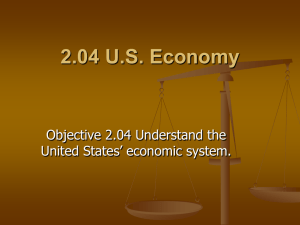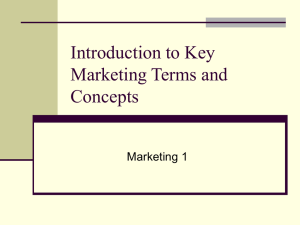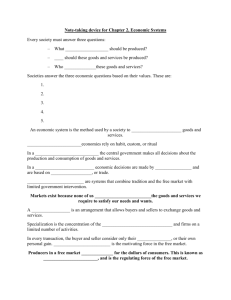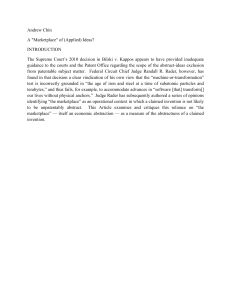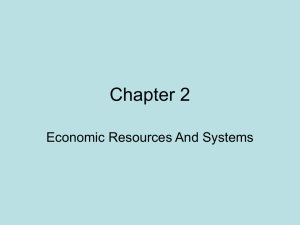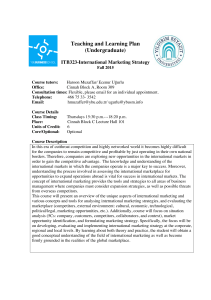Towards Decentralized and Secure Electronic Marketplace
advertisement
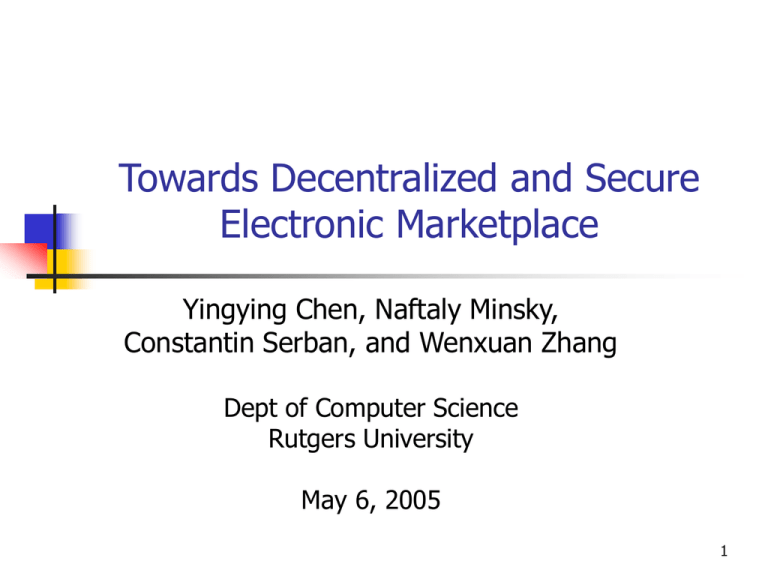
Towards Decentralized and Secure Electronic Marketplace Yingying Chen, Naftaly Minsky, Constantin Serban, and Wenxuan Zhang Dept of Computer Science Rutgers University May 6, 2005 1 Outline On the nature of marketplaces, and their conventional electronic realization. Decentralized Electronic Marketplace (DEM), and its implementation via LGI. A marketplace for Airline Ticket – An Example Related Work Conclusion 2 Market Place Essentials A venue is required for buyers and sellers to find each other and conduct trading of merchandise. A degree of trust between buyers and sellers is required. 3 Electronic vs. Traditional Marketplaces Traditional marketplace (e.g. Farmers Market, Shopping Mall): The venue of trading is physical and characterized by geographic proximity. The trust is generated by traditional societal means—such as familiarity, local laws, local customs, and local police. Electronic marketplace: No geographic proximity, thus no human interaction, and no common customs and laws. The question is: how to regain the necessary trust among the trading parties? 4 Conventional Approach to E-Market Trust is established via a central mediator that enforces a set of rules and maintains reputation. Example: ebay.com, pricingcentral.com/ford Limitations: Very expensive to establish, if the marketplace is to be scalable and reliable. The rules of trading are usually implicit in the code of the mediator, and thus quite obscure. 5 The Proposed Decentralized Electronic Marketplace (DEM) Based on Law Governed Interaction (LGI)---a decentralized coordination & access control mechanism. Interaction between buyers and sellers does not involve any central mediator. All participants in the marketplace operate via their private controllers, all carrying the same “law of the market”, L. The marketplace is defined by its law. 6 Airline Ticket Marketplace (overview) Banks Banks Banks Airlines L Buyers L L L L L Law L L L L L L Sellers L Certification Authority Auditor L Controller Agent 7 Some Trust Requirements Airline tickets cannot be forged. Credit card submitted to a seller can be used only for the specified payment. Money back guarantee would be honored. One cannot lie about his/her own reputation. 8 Implementation of DEM seller s airline al t bank sell distribute ticket L L t credit card check req credit card check resp t L ba L t buy t b buyer controller agent 9 Implementation of DEM (Trading Law, Cont.) URL location of the law: Java law: www.cs.rutgers.edu/moses/examples/marketplace/trade.java1 Prolog law: www.cs.rutgers.edu/moses/examples/marketplace/trade.law 10 Implementation of DEM (Performance Evaluation) Overhead added by a pair of controllers: Depend on the complexity of the law: 20 – 200 µs Negligible over WAN Acceptable over LAN 11 Deployment (Using Distributed TCB) Controller Service I I I I x adopt(L, m ==> name) y L I m’ L adopt(L, name) m’’ I Implemented by Moses Middleware 12 y Related Work European SEMPER project [Wainder, M. et.al. 1996-2000] Proposed a secure electronic marketplace for Europe Basic trust assumption has been that each user trusts his or her own machine, but not the machine of the partner. Had no continuation after the project has been completed in 2000. Distributed Digital Commerce [Schemees, M. 2003] Discussed the benefits of decentralized market for digital goods. Studied the processes involved in digital trading and their implementation using P2P communication Proposed no mechanism for achieving the trust and security in the marketplace. 13 Conclusion Proposed the concept of DEM (Decentralized Electronic Marketplace) Proof of concept provided by an implementation of the airline tickets marketplace Completely decentralized, fully scalable, and lightweight. Security and trust are provided by a single, unifying law that governs all the transactions made through the marketplace – in some analogy to the laws that govern the traditional marketplaces. Implemented in both Java and Prolog trading law Demo will be available on the web site of LGI release Realization of DEM needs a widely deployed commercial controller service, to act as a distributed trusted computing base (DTCB). 14 The End Thanks ! & Questions ? 15
